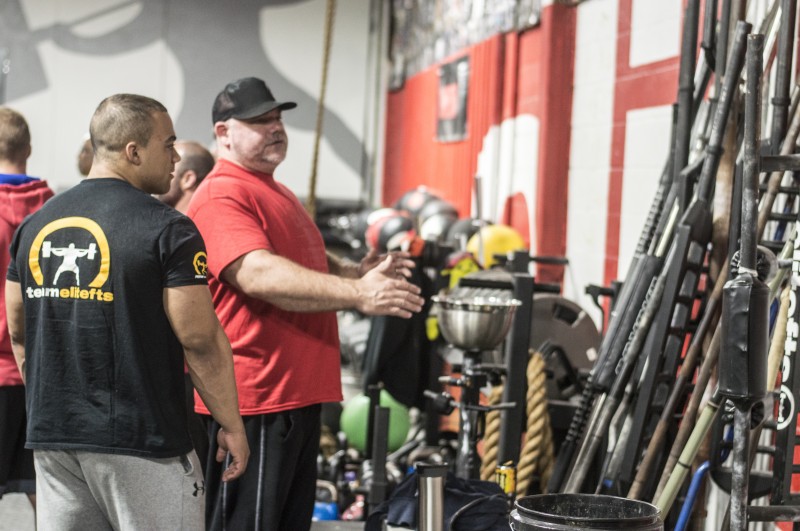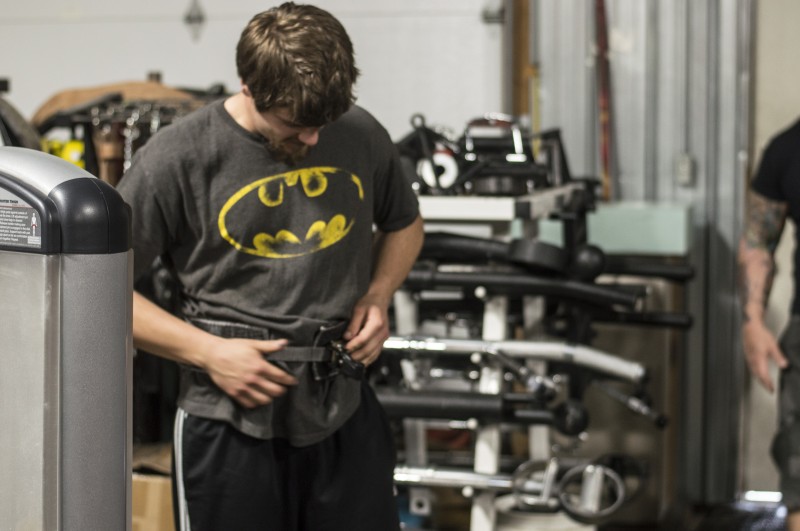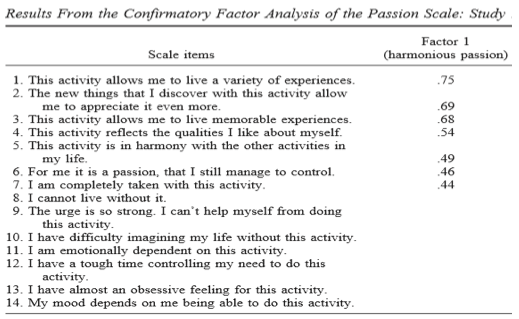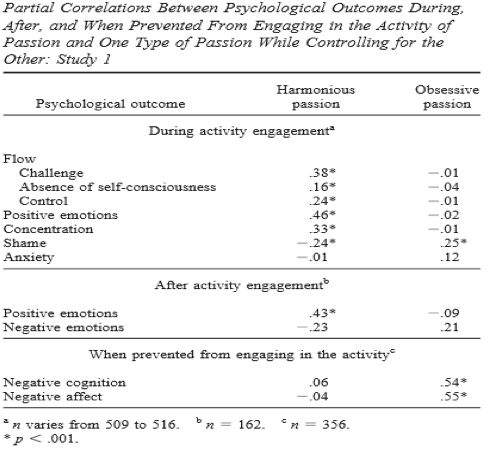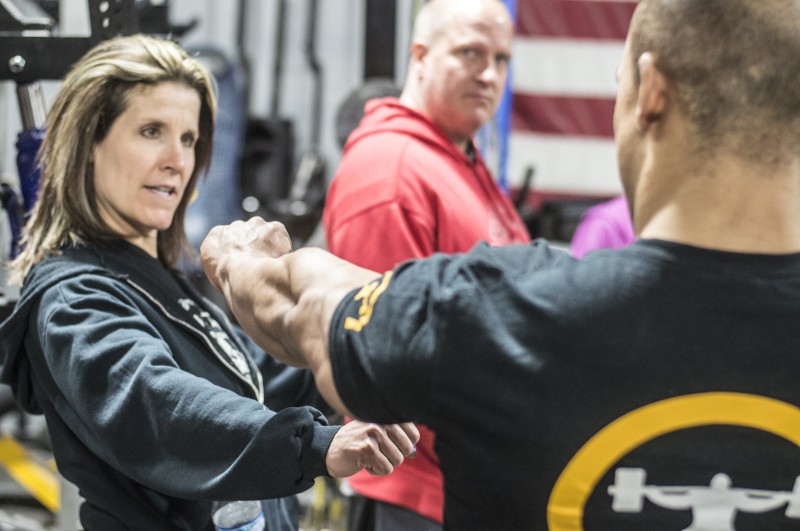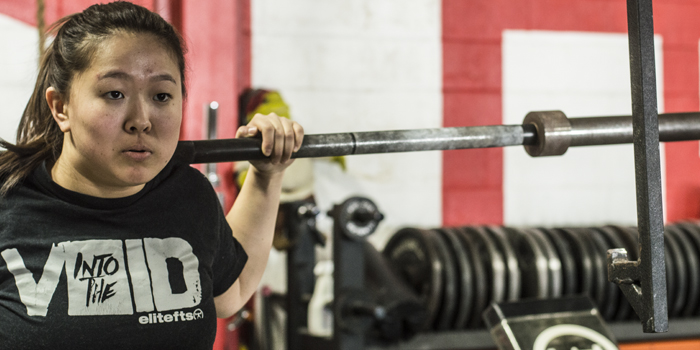
WHY READ THIS: it is somewhat arid and abstract, but read on. Understanding how these obvious things are not that obvious may provide tools or you to control your own attitude and behavior as an athlete, optimizing your performance, your health and your happiness.
"Because I love it."
That’s the short answer that most very committed people will give to the question of why they do a certain thing. This question is usually asked about autotelic activities, meaning those that have an end unto itself. People would hardly ask the cashier why he does what he does. The answer is obvious: it’s his job and people need jobs in order to survive. He didn’t necessarily have too many choices[1]. Things get more complex when you ask the same question to a neurosurgeon or an astronaut. They had many choices, and the question of “so, why neurosurgery?” is in the air, waiting to be asked.
As we have discussed in part one, there is a continuum that goes from the most extrinsic type of motivation for something to the most intrinsic. The motivation is a reason, a thought. It is the “because” for this “why." If you did the second exercise proposed in part one, you had dozens of reasons to choose and organize for your engagement in lifting and in competition.
RECENT: Why Do You Lift — Meaning, Identity, Hope and Passion
But what about the emotions that underlie those reasons? Except for the extreme extrinsic motivations such as “because my father wants me to” or “because I wanted to lose weight," there is some kind of affect towards the activity itself, even if the intrinsic motivation is “because it makes me high and I love the feeling.” There is another class of driving force that emanates from some type of profound emotion for one to engage in an autotelic activity. It is much harder to put in words when one defines this commitment as “love."
And love, everybody knows, is a complicated feeling, a four letter word, and a crazy little (or not so little) thing.
This set of affects is what turns a person who went to medical school into a doctor, a person who writes into a writer, and a person who lifts weights into a powerlifter.
Those of you who had the opportunity to talk to old time legends of powerlifting who keep lifting will hear from them some variation of “I will do this until the day I die” or “while I can lift, I can live." It is unavoidable to grasp the fact that whatever drives them to undergo surgeries, face pain, and hit the loaded bar under snow or rain is some deep rooted (also known as “internalized”) emotional drive.
The lay term we use for this is passion. We’re lucky, because the technical term for this is also passion.
Passion is defined as the strong inclination or impulse that drives someone to engage in something they like, find important, and consider justified to spend time and effort doing. Passion may fuel motivation. Even more than that, passion is seen as one component of why a person sees their life as worth living and something that becomes an important component of their identity (Vallerand et al 2003).
In an amateur, non-Olympic sport, understanding passion becomes even more relevant: why would Jon Pall Sigmarsson, in a time when Strongman was not what it was today, say that “there is no reason to be alive if you can’t deadlift”? Contrary to medical advice, Jon Pall not only deadlifted, but did all sorts of things he loved with heavy objects, that were said would kill him because of his heart condition. At 32 years old, he died after doing the thing he loved the most: a deadlift. His love for the strength sports was stronger than his desire for longevity.
Which is why we need to discuss passion and our affective response to any autotelic activity: it is important to understand that humans engage in things for internal forces other than survival. The great majority of humanity unfortunately lives under such poor material and symbolic conditions that it is utterly impossible to understand why a man would give up his longevity in order to pick up something heavy just to put it down exactly on the same place. It sounds nuts. But it is driven by passion.
I need to make a disclaimer concerning the scientific research underlying most of what is presented here: most of this was studied to understand some negative aspects of task engagement, such as addiction. If you read the primary sources that I cited, there is a strong normative subtext about “positive” and “negative," especially from the most prolific research school, the “Self Determination Theory (SDT)” group. I don’t advocate that and I am neutral to those categories. Just as I believe there is both extrinsic and intrinsic motivation components in any of us who are motivated, I believe there will be harmonious and obsessive components (continue reading for the definitions) in all of us who are passionate, especially those who are passionate about individual sports such as powerlifting. This is neither good or bad, but understanding how obsessive passion can make us more prone to injury or burnout may help us balance our obsession with harmony. Because, like all good things in life, they are not black and white, “red in tooth and claw," but an infinite palette of colors and shades.
What is Passion?
We now know that passion is the impulse or strong inclination to engage in something significant. How significant? Significant enough to be internalized into someone’s self representation, or identity, which is why we began this series defining identity (Vallerand et al 2003, Vellerand et al 2006).
Proponents of Self Determination Theory suggest that passion exists in two forms: harmonious passion and obsessive passion. For these authors, harmonious passion happens when the activity is freely accepted without any contingencies. The individual engages in something out of his own volition or choice. Obsessive passion, on the other hand, would be the result of a controlled internalization of that activity into the individual’s identity. “Control," in this case, refers to pressures derived from contingencies attached to the activity, such as feelings of social acceptance or self-esteem.
Harmonious passion, in spite of being stricto sensu passion, and therefore an internalized aspect of the person’s identity, allows the individual to exert control over the activity.
The table below (Vallerand et al 2003, table 2) associates scales items to statistical indicators according to which items 1 to 7 are more strongly associated with harmonious passion, whereas items 8 to 14 are more strongly associated with obsessive passion.
From: Vallerand et al. 2003, pg 760. , Table 2
The difference between something being significant, identity-determinant, but not having an overpowering space in the person’s identity (harmonious passion) and something being so controlling that the individual is rendered literally powerless and unable to resist it (obsessive passion) is, for this research school, a line that separates “positive” and “negative” affect. In other words, good and bad. Hold that thought (that I know you have): it’s not good versus bad. As I said before, the color palette between black and white contains infinite colors. For us, what matters here is the level of control we may exert over our own lives.
Let’s see some examples. Research from this group relates burnout to harmonious and obsessive passion. Most high performance athletes have experienced burnout syndromes sometime in their careers. Burnout is a physically and psychologically debilitating state that goes beyond the concept of overtraining (Gustafsson et al 2010, 2011a and 2011b). According to Curran et al (2013), it is more likely to happen among athletes who experience obsessive forms of passion with their sports than to those who experience harmonious passion. Since harmonious passionate athletes are, according to the model, more autonomous, and since burnout is highly associated with a failure to meet satisfaction towards some basic existential need, harmoniously passionate individuals, exerting more control over their activity, can either back off or solve the issue, while obsessives fail to do so, going on and on until they crash.
Another study examined the relationship between the two types of passion and injury among dancers. Examining 81 student dancers, the study conducted by Blanka et al (2006) concluded that harmoniously-passionate dancers suffered less from acute injuries. They would be more inclined to accept a problem-focused and health-promoting approach. This is associated to a “flexible” versus “rigid” approach to the activity. The obsessively-passionate dancers would not deviate from their rigid goals and project, thus being unable to adjust their activities to the advent of injury and to incorporate injury prevention actions.
A study about aggression in basketball conducted by Donahue et al (2009) showed that players who are obsessively-passionate displayed a higher level of aggressiveness in situations of identity-threat. According to the authors “the love for one's sport may lead to some maladaptive interpersonal behavior, especially if such love is rooted in a sense of identity that is contingent on doing well in that sport."
If there is evidence that obsessive passion generates negative affects and is statistically related to undesirable outcomes, such as injury and burnout, is there evidence for the opposite? That harmonious passion leads to desirable results?
Bonneville-Roussy et al. (2011), in a study with musicians (“what does playing the violin have to do with squatting?” asks you, to which I reply, “skill and excellence, bro”), concluded that the harmoniously-passionate musicians targeted mastery goals, which in turn predicted the use of deliberate practice and resulted in higher performance (also predicted in sport by Vallerand et al 2008). The obsessives displayed avoidance goals. Yes, they were in bad shape and the study obviously concluded that the harmonious guys lived a happier life (“subjective well being”).
Observe the table below (table 4 from Vallerand et al 2003):
From: Vallerand et al. 2003, pg 761. , table 4
Never mind right now the statistic analysis methodology itself[2]: the higher the positive value, the more that type of passion is related to a psychological outcome. This table shows us some interesting issues that are still not well understood in sports psychology: flow, which is an altered state of consciousness with a very intense level of focus, seems to be correlated to high performance. Not only high, but exceptional performance. This study suggests that the state of emotional control that harmonious passion entails comes along with flow, concentration, absence of self-consciousness (the ability to “lose yourself” in the activity), among other items that seem to be interrelated. Also, there is an overall lower level of anxiety, which, we all know, destroys performance.
All these things are good lessons for us: the more we are in control of our emotions as we relate to lifting, the lower the risk of injury, the higher the ability to concentrate and, therefore, to best perform. We all want these things, don’t we?
WATCH: Into The Void Documentary
But how do we make sense of the statements on the first table, where I bet we could all see ourselves saying things that were both harmonious and obsessive?
The first thing to keep in mind is that we are talking about correlations and not yes or no situations. The second thing is that in all the maladaptive situations associated to obsessive passion, the negative affect and/or consequences (injury, aggression, mental suffering) were associated to a form of “love” for the activity limited to high performance and winning. This is discrepant to many attitudes and behaviors we observe among elite powerlifters that would be typically classified as obsessive. Most of our legends are not competing anymore, yet they would rather die than stop lifting. These lifters never limited their love for powerlifting to the podium. Those who did are not around anymore and probably conformed more strictly to the obsessive type described in these studies.
The third thing to consider is that we live in the real world. However, much in love and harmoniously passionate a student is about hockey, if he has a full scholarship for playing it, there will be external contingencies, period. You can say as much as you like that it is just external motivation. But are you sure that doesn’t translate into anxiety, an internal sense of self-worth, and other types of affect directly related to obsessive passion? And yes, as such contingencies develop, the activity occupies a greater space in the individual’s identity.
What are the lessons to take home from the understanding of passion?
- The more in control and the closest to the harmonious side of the spectrum we are, the more positive outcomes we will have for injury prevention, management, and cure.
- The more in control and the closest to the harmonious side of the spectrum we are, the better we will be able to remain calm and focused during a competition, optimizing our performance.
- We are human and there are internal and external contingencies in our lives that may render our passion to powerlifting more or less obsessive and that is okay as long as we know it.
- We can research available tools that may optimize the harmonious components in our passionate relationship with powerlifting, such as meditation or whatever works for you.
- The more “contingencies” we suffer in life, the more obsessive we will tend to become with powerlifting, affecting other elements of our lives such as our jobs and relationships with other people, which is an undesirable consequence.
- Finally, dear reader, if you define yourself as a powerlifter, it is part of your identity and, therefore, you are passionate. You are in love with this sport. Deal with it.
References
- Vallerand, Robert J., et al. "Les passions de l'ame: on obsessive and harmonious passion." Journal of personality and social psychology 85.4 (2003): 756.
- Donahue, Eric G., Blanka Rip, and Robert J. Vallerand. "When winning is everything: On passion, identity, and aggression in sport." Psychology of Sport and Exercise 10.5 (2009): 526-534.
- Bonneville-Roussy, Arielle, Geneviève L. Lavigne, and Robert J. Vallerand. "When passion leads to excellence: The case of musicians." Psychology of Music 39.1 (2011): 123-138.
- Rip, Blanka, Sylvie Fortin, and Robert J. Vallerand. "The relationship between passion and injury in dance students." Journal of Dance Medicine & Science 10.1-2 (2006): 14-20.
- Vallerand, Robert J., et al. "Passion and performance attainment in sport."Psychology of Sport and Exercise 9.3 (2008): 373-392.
- Curran, Thomas, Paul R. Appleton, Andrew P. Hill & Howard K. Hall (2012): The mediating role of psychological need satisfaction in relationships between types of passion for sport and athlete burnout, Journal of Sports Sciences, 1-10
- Vallerand, Robert J., et al. "Passion in sport: A look at determinants and affective experiences." Journal of Sport and Exercise Psychology 28.4 (2006): 454.
- Gustafsson, H., Hassme´n, P., & Hassme´n, N. (2011a). Are athletes burning out with passion? European Journal of Sport Science, 12, 387–395.
- Gustafsson, H., Hassme´n, P., & Podlog, L. (2010). Exploring the relationship between hope and burnout in competitive sport. Journal of Sport Sciences, 28, 1495–1504.
- Gustafsson, H., Kentta, G., & Hassme´n, P. (2011b). Athlete burnout: An integrated model and future research directions. International Review of Sport and Exercise Psychology, 4, 3–24.
[1] The occupation of cashier was used as an example of a job that does not require extensive training and skill development and is usually performed with a focus on supplying income, not providing the “three basic psychological needs”: autonomy, competence and relatedness (see part 1). There is no judgement there, since most people will seek to satisfy those needs with other activities that are not their paying jobs, like many powerlifters do, in fact.
[2] A confirmatory factor analysis: check Vallerand et all. (2003)










